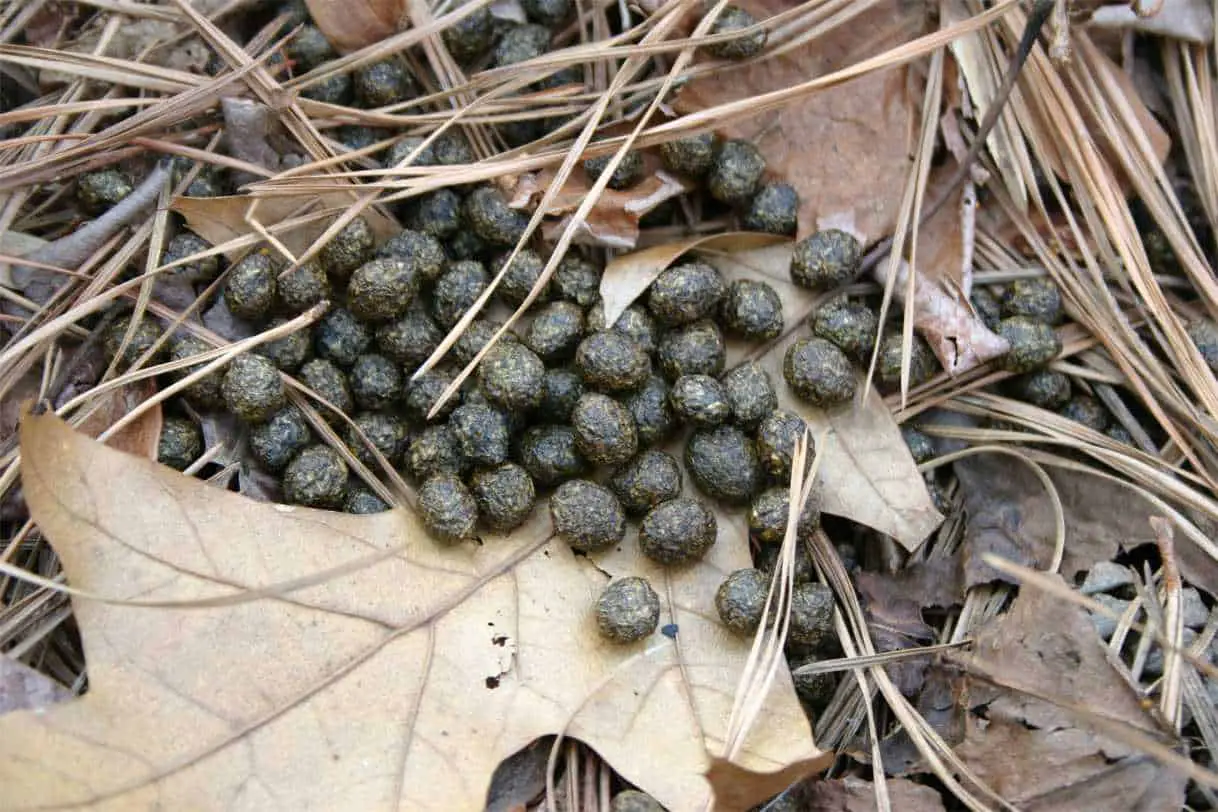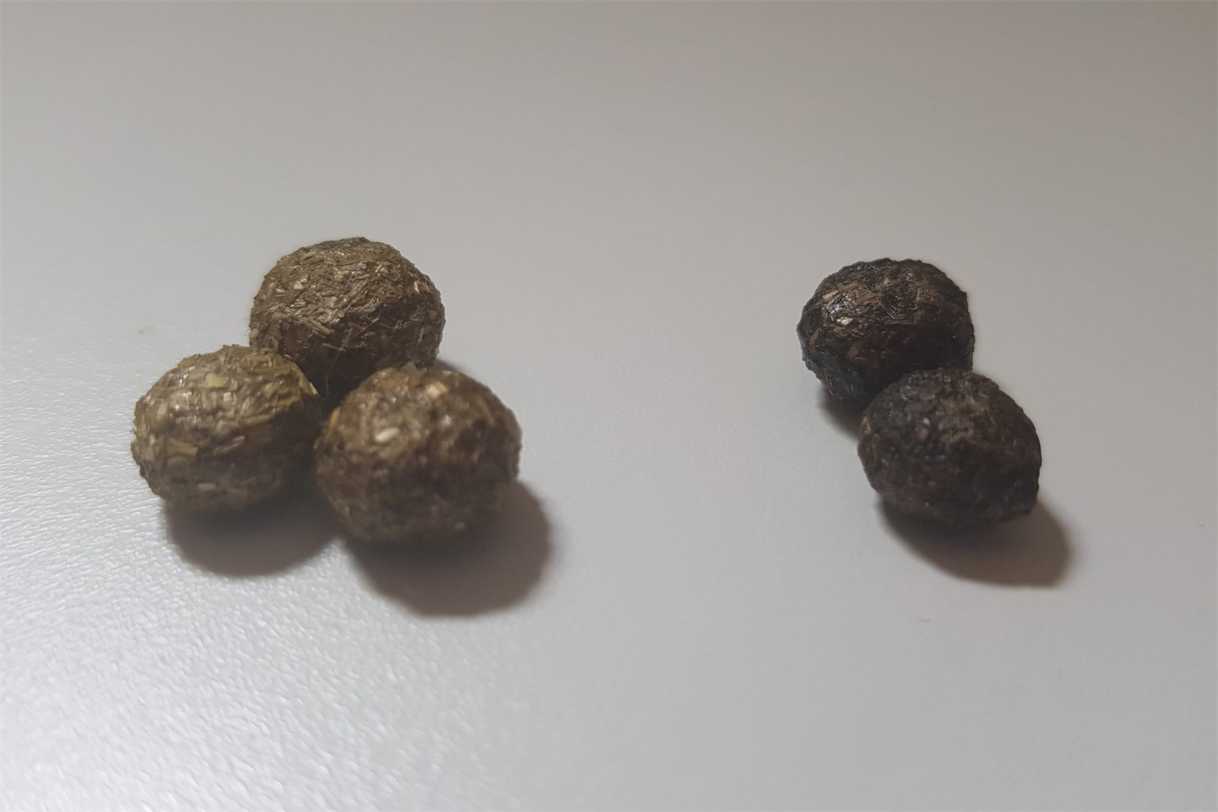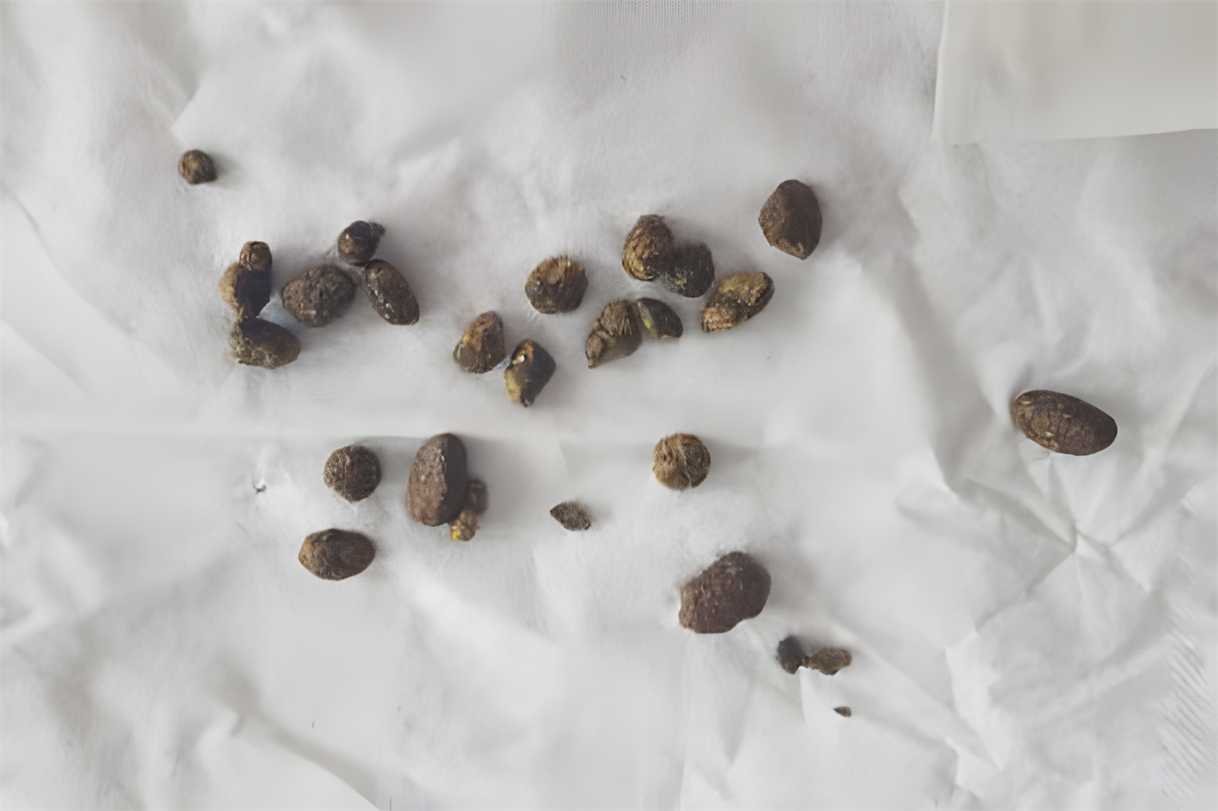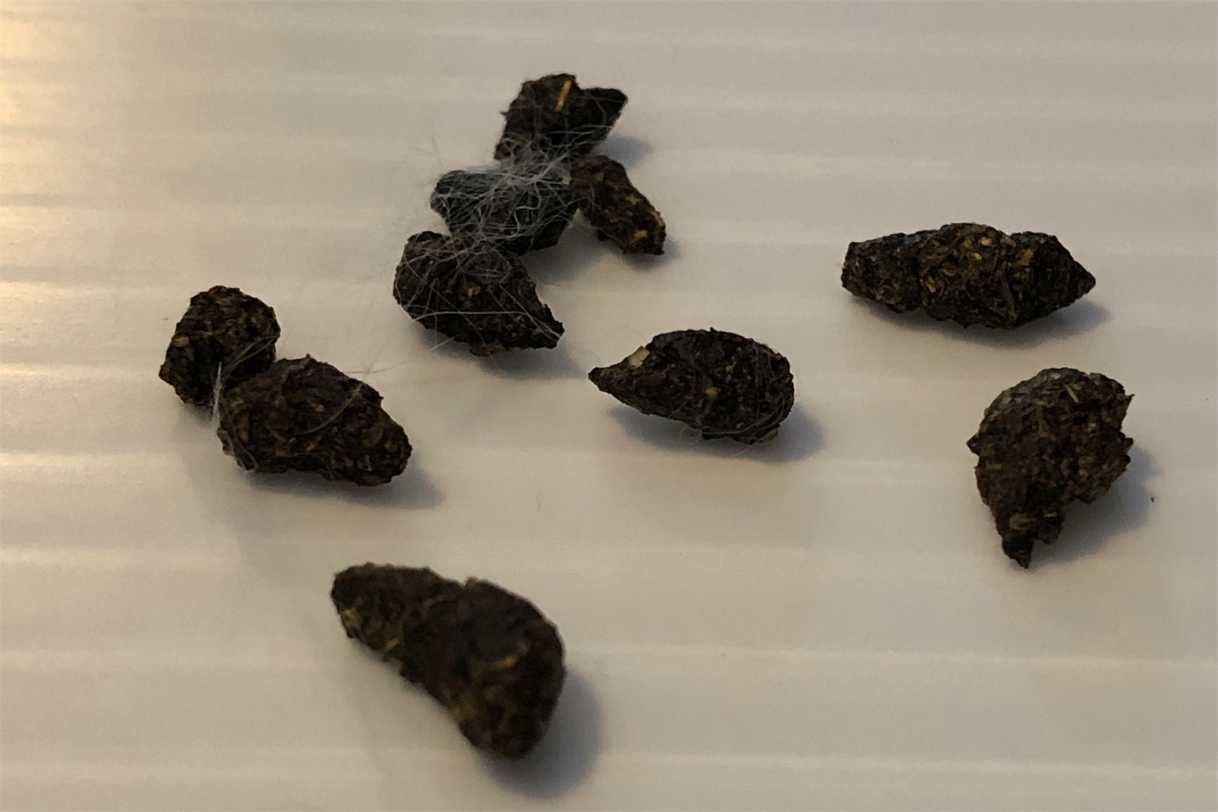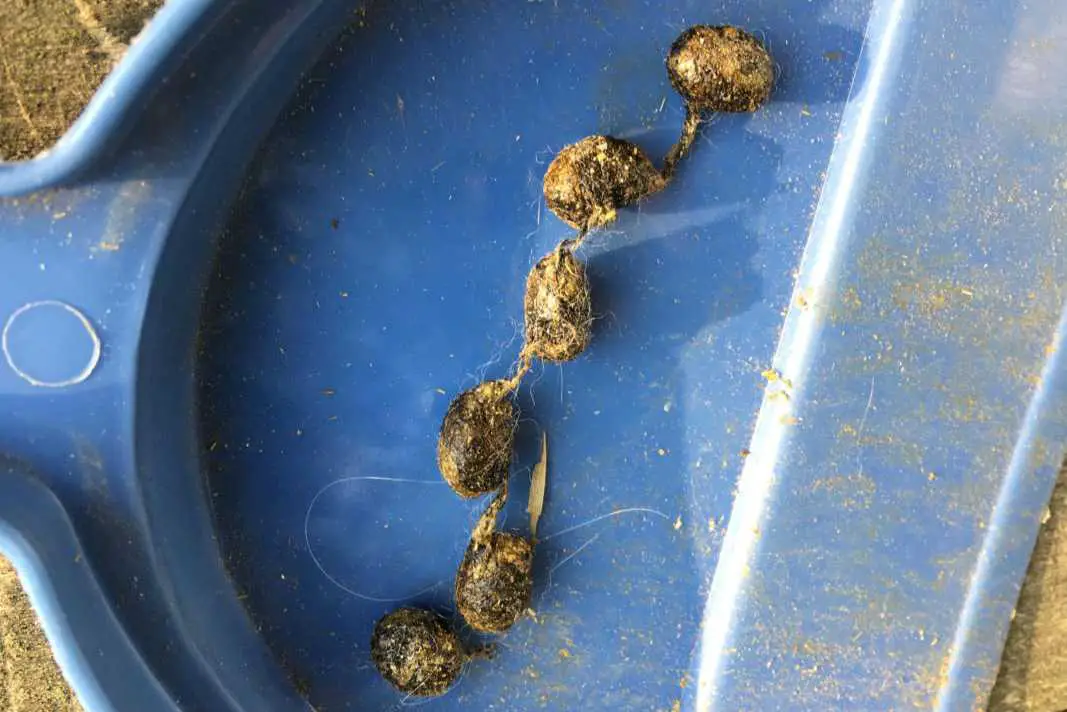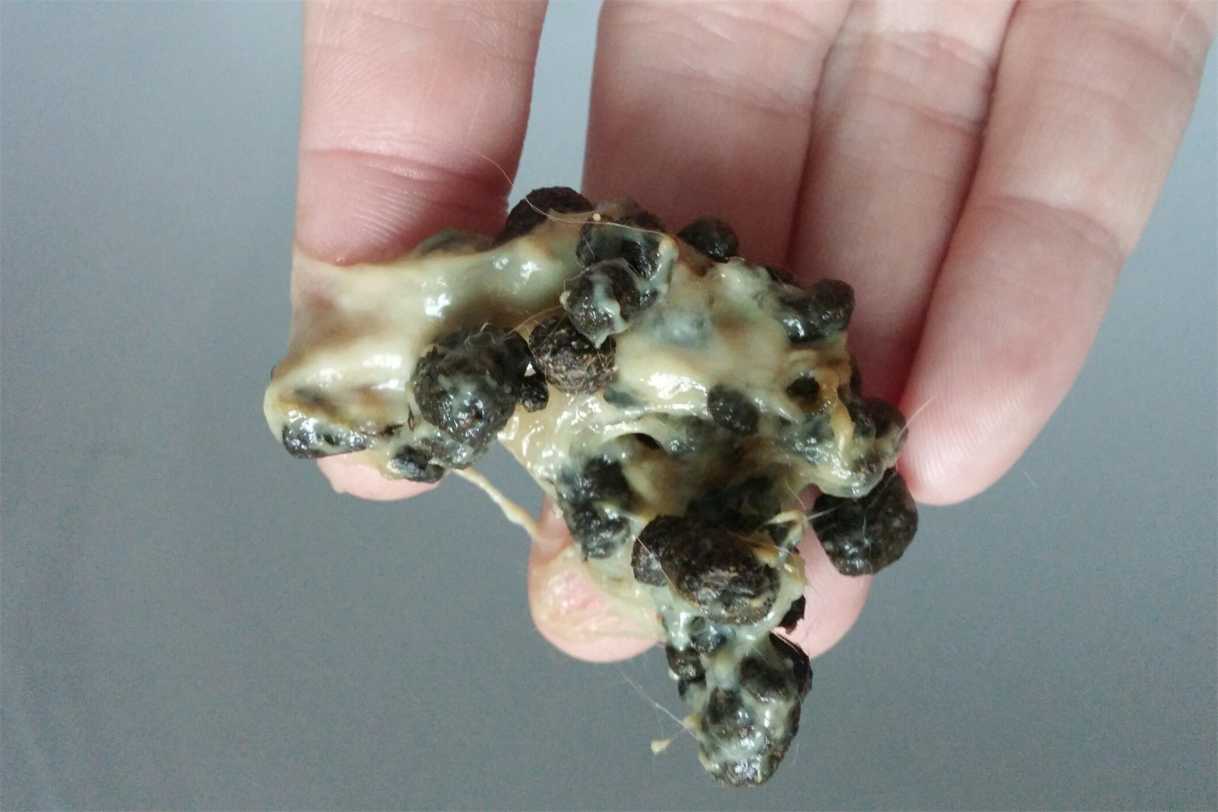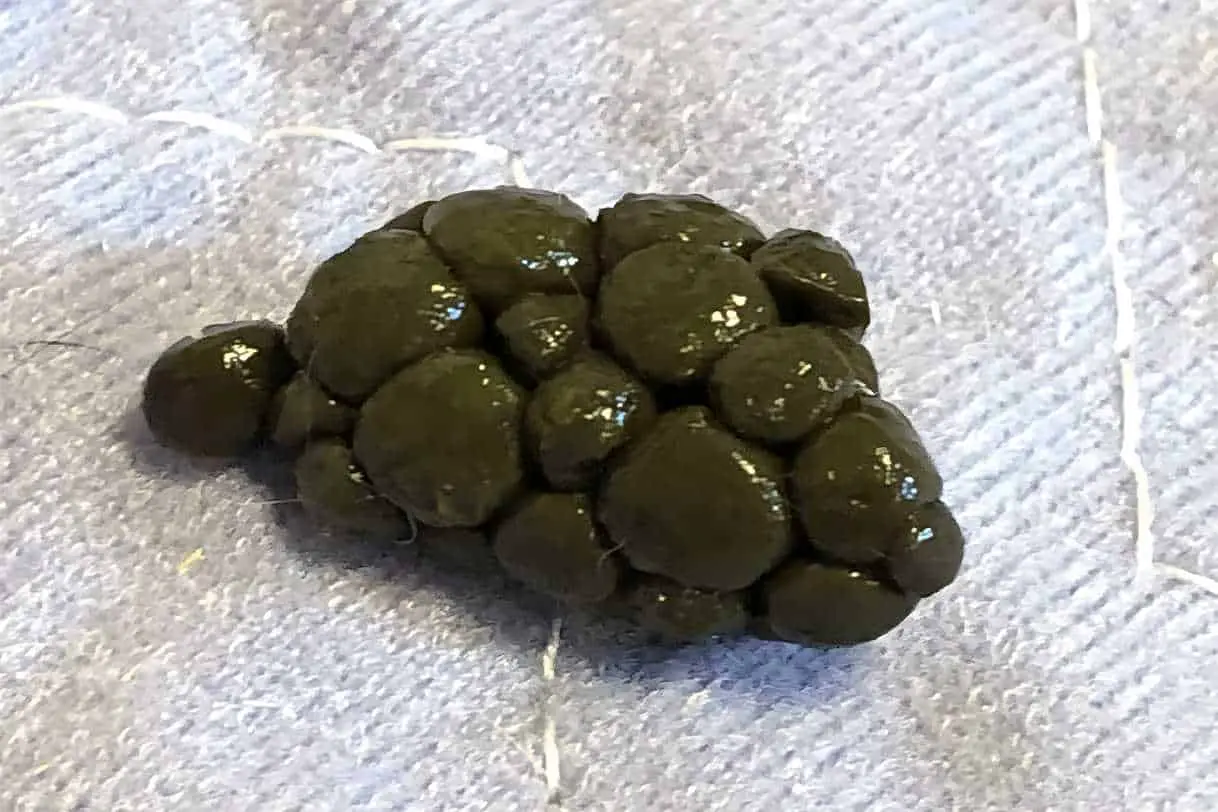A rabbit’s poop may be small, but it holds a lot of information about its health. Observing their size, shape, and color can provide clues about what’s going on inside their gut and overall health. Check out this complete guide to rabbit poop to know what’s normal and what’s not.
What’s a normal rabbit poop?
A typical rabbit poop looks like round, fibrous, and firm pellets. They’re dry and hard, not sticky and mushy, unlike other animal poop. They will look like sawdust when crushed, revealing a grainy consistency. You may find their droppings scattered in small clusters.
Since rabbits eat lots of hay, their poop follows the same consistency and characteristic as dried-up grass. When their feces become watery, soft, or unformed, it can become a cause for concern. A deviation from the hay-like characteristics means something is wrong with the bunny’s gut.
A Rabbit’s Normal Poop Size
A rabbit’s poop size isn’t always proportional to its body size. A giant rabbit may sometimes churn out small pellets, while a small bunny may have big poop pellets.
It’s crucial to note that unusually tiny or abnormal-shaped poop are symptoms of medical conditions such as loss of appetite, intestinal problems, or acute pain. What you have to observe is not the size but the consistency.
A Rabbit’s Normal Poop Smell
The rabbit produces one of the least odorous poop among all animals. Normal bunny droppings have a very mild odor. If you notice your rabbit’s poop is smelly, it must have an underlying health condition that you need to address.
On the other hand, Cecotropes have a more pungent scent, but they are healthy and normal excretions. We will discuss this unique bunny fecal matter later in this article.
A Rabbit’s Normal Poop Color
Different rabbits may have various poop colors even if they belong in the same household or eat the same food. One bunny may have light brown poop, while another may produce a darker one.
Again, just like the size, the key is consistency. Healthy rabbits will always have droppings of the same shade. However, if you make significant changes in the rabbit’s diet, you might notice slight color changes.
Upon closer look at the poop pellet, you’ll find that the inside has a lighter color than the outside. Sometimes, you may notice a soft green interior. As long as the poop is not dark or almost black, you don’t have to worry.
Please watch this video to help you identify what a normal rabbit poop looks like.
What’s an abnormal rabbit poop?
Rabbits are good at not showing their pain or hiding away when sick. So, being aware of their bowel movements can help you identify if they have health problems. They are generally sensitive animals with a delicate digestive system, so even a slight change in their droppings may mean there is something wrong.
Abnormal poop can be symptoms of an upset stomach or other digestive tract issues. The following are signs of abnormal rabbit poop.
Very Small Poop
When your rabbit produces poop that is tinier than usual, it means that it is going through a lot of stress. It may be something in its environment, like a neighbor’s dog who keeps on barking or a child who has been playing roughly with it.
If the dropping becomes small for a few hours and then returns to its standard size later, they are stressed but feel better already. Please check their behavior and eating habits also to be sure. If everything is well, then there’s no need to worry.
However, when your bunny continuously produces small droppings, it means it is ill or in pain. You need to bring your pet to the veterinarian immediately for proper diagnosis.
Clumped Up Poop
A rabbit’s digestive tract works like a well-oiled machine that regularly churns out consistent poop. However, there may be times when their gut seems to take a break and produce two or three droppings stuck to each other. You will notice that they look like two balls glued together, but sometimes they are too mushed up that the droppings become elongated.
If you observe these variations a few times a day, you have nothing to worry about. Their gut may have temporarily slowed down due to stress. However, when they happen many times within the day, their digestive system slows down for more extended periods. Bring your bunny to the vet for proper treatment. They may need to stimulate their digestive tract to bring it back to normal.
What are other signs of an abnormal poop?
Deformed Poop
A rabbit may produce deformed poop when not eating or drinking enough. It can also mean that food is having a hard time passing through the GI tract due to blockage. A bunny may not be eating due to stress, pain, sickness, or overgrown teeth. Whatever reason it lacks appetite, you need to treat it as a severe medical issue.
On the other hand, when a rabbit has just recovered from surgery or GI stasis, it’s normal for its poop to have an odd shape. It may not be eating as much as it needs to since it is still recuperating.
Strung Together Poop
It is expected especially for furry bunnies to produce poop strung together by their hair, like a string of brown pearls. It can also happen during molting season when rabbits ingest more hair than usual.
It’s perfectly normal if these “poop chains” are consistent in color, texture, and size. If the spaces between the pellets are also the same length, then it means that your bunny’s digestive system is in great shape. However, if you see these strung together poop more often, you need to groom your pet regularly to avoid furball blockage.
True Diarrhea
Diarrhea in rabbits manifests as loose and watery stools, which can be a sign of a more severe problem. True diarrhea is often a result of parasites, poisoning, antibiotics, and infections.
It would help if you gave your pet, especially the younger ones, immediate attention since dehydration can be fatal. Please bring your pet to a veterinary clinic as soon as you notice their loose bowel movement.
Mucousy Poop
When the rabbit’s gut bacteria is imbalanced due to an occurring or healing GI stasis, its poop will have some mucous. Parasites such as pinworms or tapeworms can also make the bunny’s droppings covered with a slimy substance. Remember to bring a sample of the mucousy poop to the veterinarian for further tests and analysis.
What are Cecotropes?
Rabbit enthusiasts and experienced pet owners are aware that bunnies have two kinds of fecal matter: cecotropes and pellets. Droppings that are small, shiny, and dark are called cecotropes.
It’s easy to distinguish them from pellets since they look like grapes or tapioca pearls rather than dried-up hay balls. Cecotropes are also smellier than regular poop, especially when the outer coating bursts. Despite its smelly reputation, this bowel movement is normal and healthy for all rabbits.
It’s also normal for owners not to ever get a glimpse of cecotropes because the rabbits eat them. This behavior of eating one’s feces is referred to as coprophagy, and it’s unique to rabbits and some rodents. This particular kind of stool contains vitamins and other nutrients good for bunnies. They usually produce and eat them during the evening or early in the morning.
Baby rabbits eat their mother’s waste instead of their own during their weaning process. However, they consume the mother’s fibrous pellets and not the cecotropes. While unsettling for humans, this natural behavior establishes intestinal bacteria colonies.
When the kits mature, they will produce and eat their cecotropes. This method allows the bunnies to pass the nutritious food twice and get all the necessary nutrients it needs to thrive.
What are abnormal cecotropes?
Rabbits usually eat this nocturnal waste directly from their bottoms, so it is rare for their owners to discover them in the litter box. So, when you happen to see cecotropes in their enclosures, the rabbits refuse to consume them due to an underlying problem.
Cecal Dysbiosis
This condition happens when the cecotropes come out as dark, smelly, and mushy poop, often mistaken as diarrhea. Rabbits, who are very hygienic animals, will not eat this pile. The poop usually scatters on the cage’s floor and into the rabbit’s fur, creating a frustrating mess.
Cecal dysbiosis occurs when the rabbit’s cecum or fermentation chamber does not function properly due to an imbalance of intestinal flora. Triggers for this condition include respiratory infections, improper diet, obesity, or urinary tract infections.
Do you want to know more about cecotropes? Watch this video.
Summary
Rabbits are exceptional animals with unique pooping behaviors. As owners, it is our responsibility to monitor their bowel movements to identify if they have health issues early on. This complete guide to rabbit poop can help reveal what’s normal and what’s not. Having this crucial information can save your bunny’s life.
